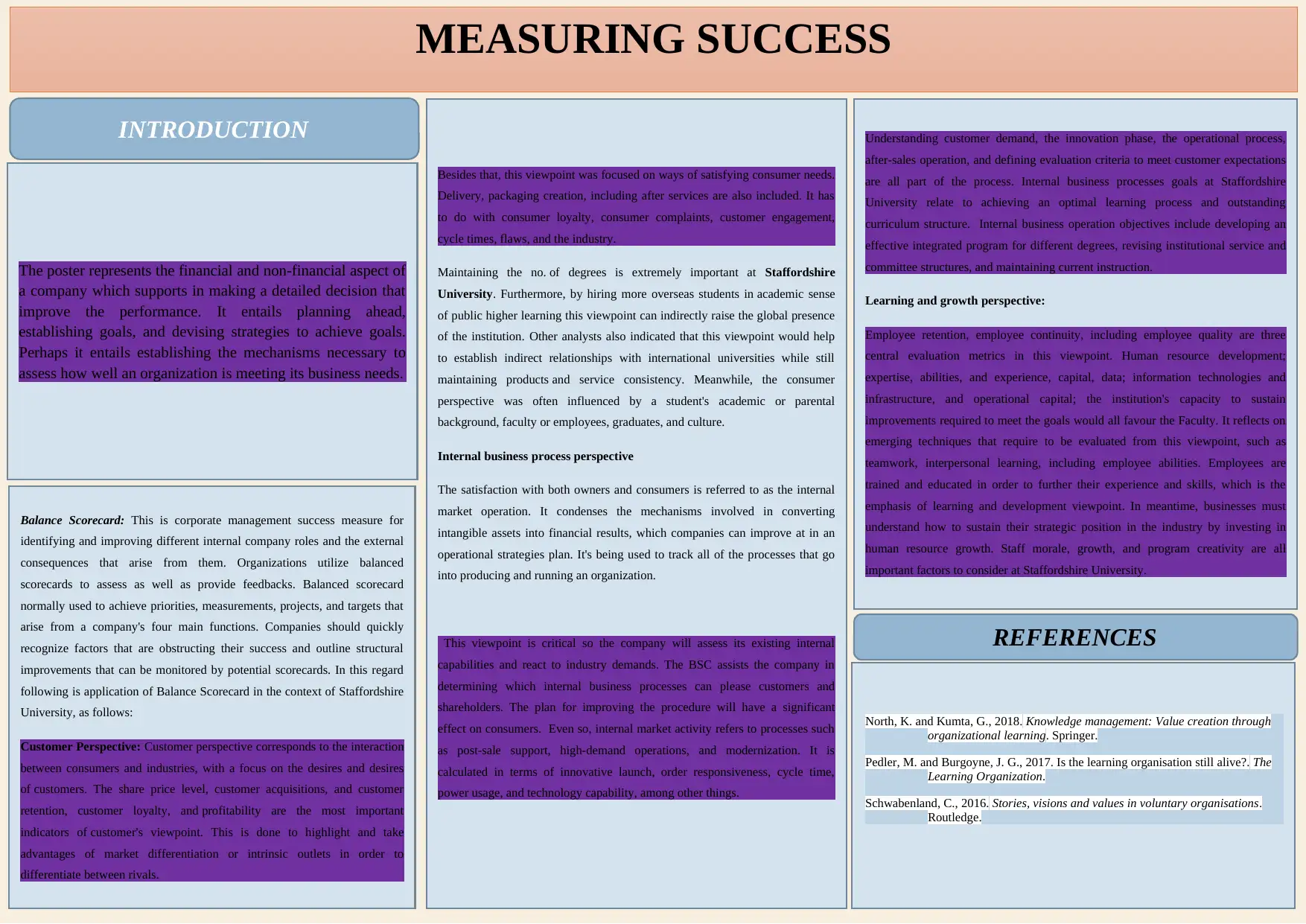Measuring Success: Balanced Scorecard at Staffordshire University
VerifiedAdded on 2022/12/27
|1
|824
|29
Report
AI Summary
This report provides an overview of measuring success through the application of the Balanced Scorecard (BSC), specifically in the context of Staffordshire University. It examines the key perspectives of the BSC: customer, internal business processes, learning and growth, and financial. The report highlights the importance of understanding customer demand, innovation, and operational processes. It discusses how the BSC helps organizations assess performance, set goals, and devise strategies. The customer perspective focuses on customer satisfaction, loyalty, and market differentiation. Internal business processes involve optimizing operations, teamwork, and employee abilities. The learning and growth perspective emphasizes employee development and program creativity. The financial perspective considers aspects like share price, profitability, and financial results. The report also references how the BSC can be used to achieve priorities and targets at Staffordshire University, improving performance and achieving strategic goals. The report also includes references to relevant academic literature.







![[object Object]](/_next/static/media/star-bottom.7253800d.svg)